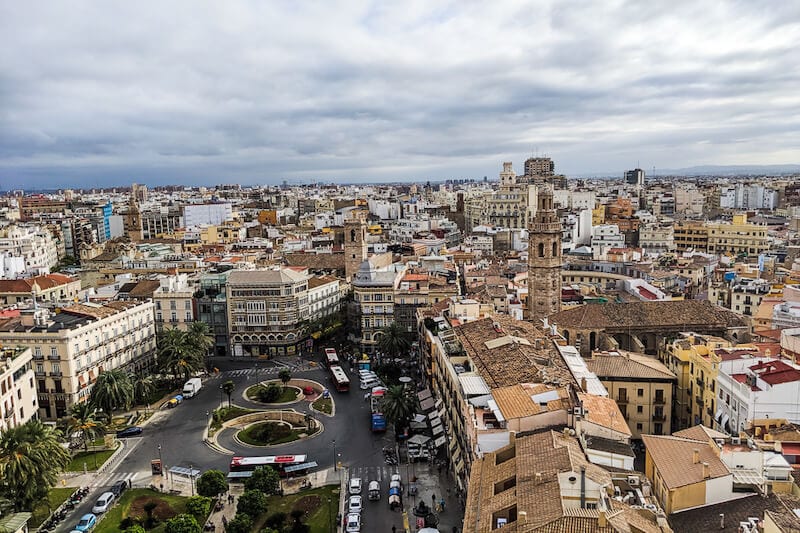
This post may contain affiliate links. We may receive a small commission, at no cost to you, if you make a purchase. Read Disclosure.
Valencia sits proudly on Spain’s sun-kissed coast, but it offers more than just a beach. It’s a city that stirs old-world charm with futuristic flair, where medieval towers watch over glass-and-steel dreamscapes, and the Mediterranean breeze and palm-lined street make it feel like a tropical oasis.
In Valencia, you can have a relaxing day wandering from storybook plazas to coffee shops, or duck into sci-fi museums and shop for the ultimate taste of citrus in bustling markets, or simply let the warmth of the sun spill over you as you enjoy a glass of horchata.

There are so many things to do in Valencia, but the real charm is simply being able to slow down, look up, and delight in the unexpected.
So if you’re not sure what to do in Valencia on your first visit, then prepare to fall valencian-tly in love with this Mediterranean gem, where every corner is a discovery waiting to happen.
Want to save money on attractions in Valencia? Check out this Valencia tourist card, which gives you 35% off Valencia attractions for 7 days. Visit places like the Cathedral and get discounts at the City of Art and Science.
1. Ignite your senses at Mercado Central Valencia (The Central Market of Valencia)
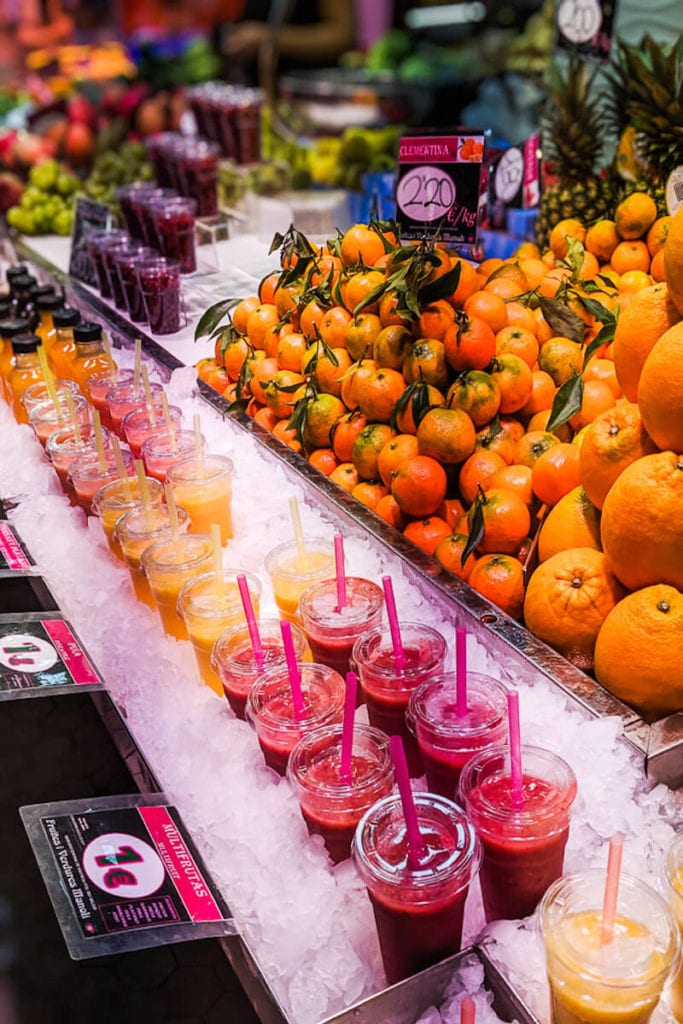 Mercado Central Valencia
Mercado Central Valencia
Mercado Central Valencia is a busy market that’s a must-see, especially for foodies. Wander the stalls filled with colorful fruit juices, vegetables, jamon, and snacks. Try some samples or buy a few items to make a meal out of it.
It was built in 1928 and took 14 years to build. The market is a huge 86,000 square feet and covers two floors. It has lots of stalls that mainly sell food and local produce, but even if you’re not looking to buy, it’s a great place to see for its architectural beauty.
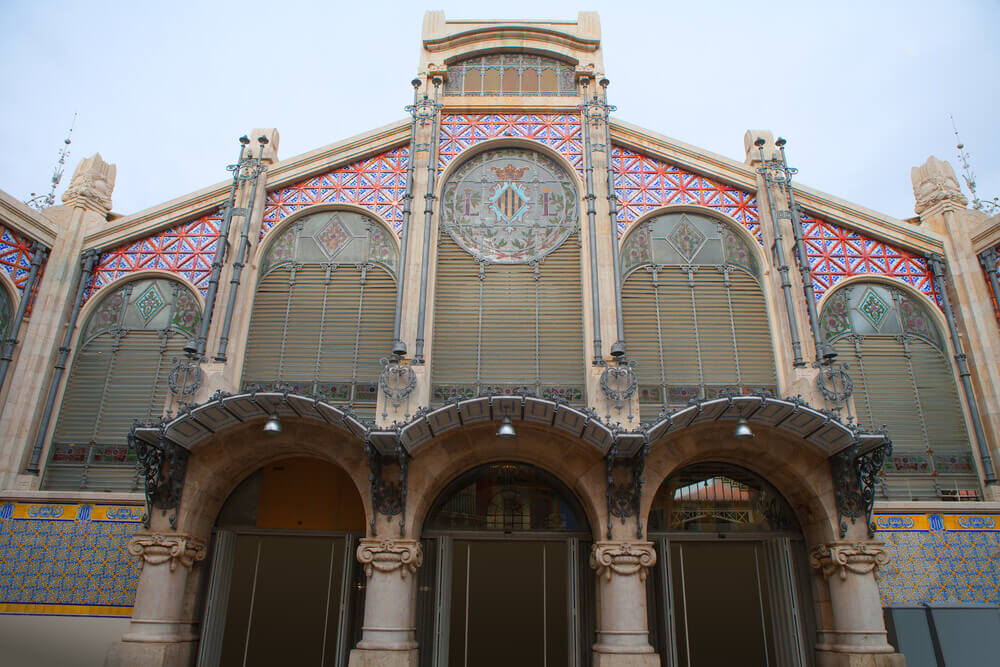
Stop at Retrogusto Coffeemates for top-quality coffee. Mercado de Colon is another market to mention with more ready-to-eat items vs. produce.
If you’re a food market fan and heading to Madrid, read more about the TOP Madrid Food Markets here.
2. Admire the architecture of La Lonja de la Seda (Silk Exchange)
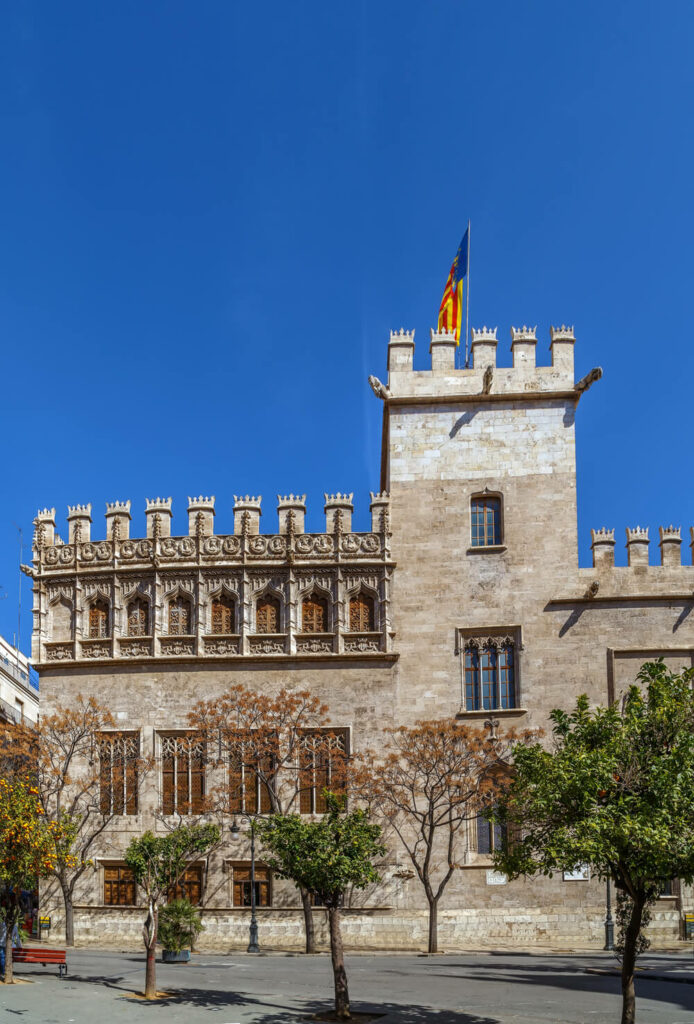
A classic work of stunning architecture is La Lonja de la Seda. It was built in the late 15th-century in a Valencian Gothic style. It used to be a market and one of Europe’s top trade centers.
The name translates to “Silk Exchange”, and was where traders from the East would come to make deals with those in the Mediterranean. Today, the building is a UNESCO World Heritage site and a celebration of history and culture.
Pay the extra couple of Euros for the audio guide to learn about the building and a bit about Valencia’s past.
3. Marvel at Valencia Cathedral
 Valencia Cathedral
Valencia Cathedral
The claim to fame of the Valencia Cathedral, or St Mary’s Cathedral, is that it supposedly houses the Holy Grail (chalice), the cup Jesus drank from at the last supper, which is located in the Holy Chalice Chapel on the inside of the church.
The cathedral is located in Plaza de la Virgen, the main square and a perfect spot to grab a coffee and people watch. The site of the cathedral has historical significance as it was once the location of an ancient Roman Temple, a mosque, and now the cathedral you see today. The interiors are a mix of Gothic and Baroque styles.
Tickets include an audio guide. Once you’re done touring the cathedral head next door to climb the El Miguelete Tower for the best views of the city below. It’s an additional cost, and well worth the cost to climb the 207 steps of the Miguelete Tower.
4. Relax in Turia Gardens Jardín del Turia
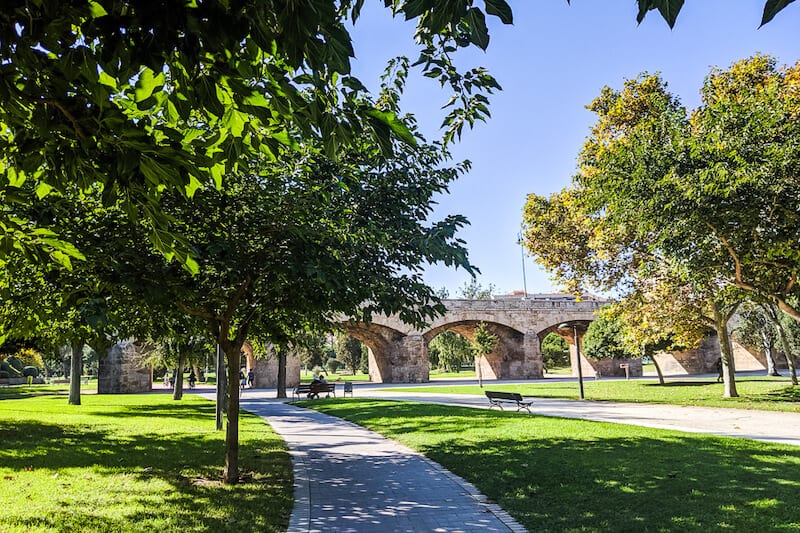 Turia Gardens
Turia Gardens
The Jardin del Turia in the city center is one of Spain’s largest urban parks and spans nine kilometers across the city. The river that once flowed through Valencia was diverted to prevent flooding of the city, and the riverbed was then converted into a massive park complete with jogging and biking trails.
It’s a huge green space that offers a place for leisure and sports, as well as offering a romantic backdrop for those looking for somewhere quiet to spend with their loved ones.
It connects Cabecera Park and the City of Arts and Sciences, The Ciudad de les Arts y las Ciències, and features 18 historical bridges over the River Turia. The most iconic of those bridges is the San José bridge, which was built in the 17th century, the 16th century Serranos bridge, and 15th century Trinidad bridge.
Be sure to head to the Cabecera Park side and ride in the swan boats. You’ll find Gulliver Park here, as well as a skate park and football field.
Walking or biking the Turia Gardens is a must because the City of Arts and Sciences is located within the park and if you go all the way down the park and continue following the cycle path you will eventually reach Malvarrosa beach.
5. Get cultured at the City of Arts and Sciences (Ciudad de las Artes y las Ciencias)
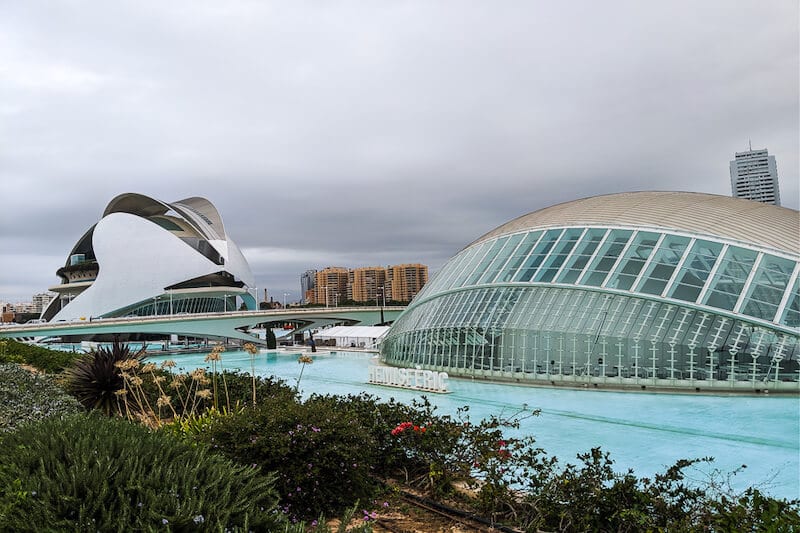 city of arts and sciences
city of arts and sciences
If you’re interested in visiting museums, then the City of Arts and Sciences is the one to visit. This modern and futuristic complex is one of the most iconic and popular things to do in Valencia.
It’s most famous for its architecture, which was designed by architect Santiago Calatrava. The City of Arts and Sciences is actually several different museums and attractions.
Inside, you’ll find a science museum, a planetarium and IMAX cinema, as well as Europe’s largest aquarium and a performing arts venue Palau de les Arts Reina Sofía.
It’s not just an interactive museum, but a city celebrating the arts and history of Valencia. It’s a massive complex and definitely somewhere worth exploring during your trip to Valencia.
The most impressive of these is the Oceanografic, the largest aquarium in Europe. The aquarium is also home to a variety of sea animals, such as beluga whales, tiger sharks, penguins, walruses, dolphins, and sea lions.
Even if you don’t want to enter any of the museums or buildings, it’s still a worthy sight to leisurely walk around and see the architecture.
The park is massive, so if you don’t feel like walking it all, check out this segway tour of the City of Arts and Science!
6. Chill out on Malvarossa Beach
The easiest beach to reach from Valencia is Malvarossa Beach as you can get here by bike. Relax in the sun, walk or ride down the palm tree lined promenade, and order some paella for lunch before you head back to the city center.
7. Get lost in Barrio del Carmen
The Barrio del Carmen neighborhood is located in the Ciutat Vella, or Old Town. Wander the cobblestoned streets and gaze at the Serrano Towers and Quart Towers (all that’s left of the medieval wall that surrounded the city), walk past quaint squares, and pick a few tapas bars for dinner later.
Take in the street art and colorful buildings. Walking around this historic center and simply taking it all in is one of my favorite ways to spend a day in the city.
8. Explore the artsy Ruzafa neighborhood
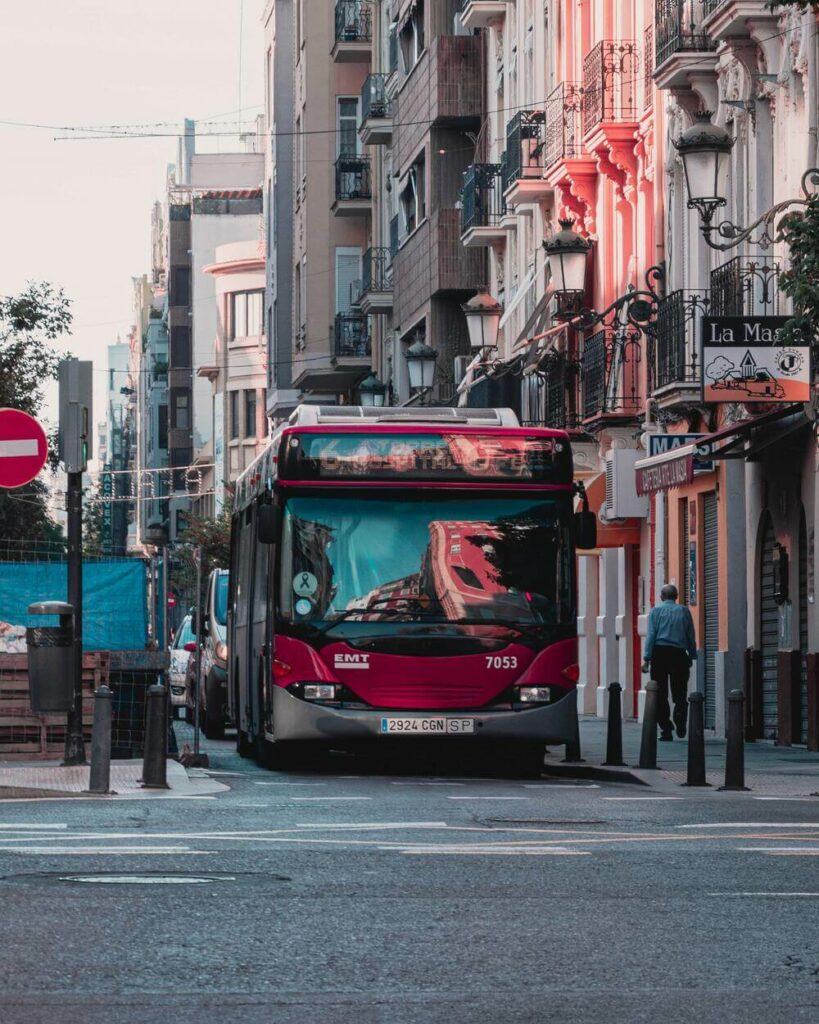
Where Barrio del Carmen is charming and historic, the Ruzafa neighborhood is hipster and artsy. Check out the Ruzafa market, visit a few art galleries, take a break at a cute café, and shop some of the trendy boutiques. This area has a local vibe and is the perfect spot to not feel like a tourist. Dulce de Leche in this neighborhood is the perfect stop for an Instagrammable coffee and cake break.
9. Revel in the festivities of Las Fallas Festival

Las Fallas Festival is a must-see event if you’re visiting in March. The festival celebrates the arrival of Spring, and officially spans for five days from the 15th-19th March. The festival is famous for its papier-mâché statues (fallas) which adorn the streets throughout the festival, and are then burnt on the last day La Cremà.
It’s also famous for Mascletà, a massive pyrotechnic spectacle of firecrackers and fireworks displays. You will find fireworks and firecrackers are set off for pretty much most of March, even outside these dates.
It began in the middle ages when carpenters used to burn pieces of wood that used to hold up their lights during winter. As time moved on, they added old clothes and rags which turned into bonfires and artistic puppet displays (ninots).
The event has been added to UNESCO’s intangible cultural heritage of humanity list and is a must-see thing to see in Valencia this time of year.
10. Admire the sunset in Albufera Natural Park
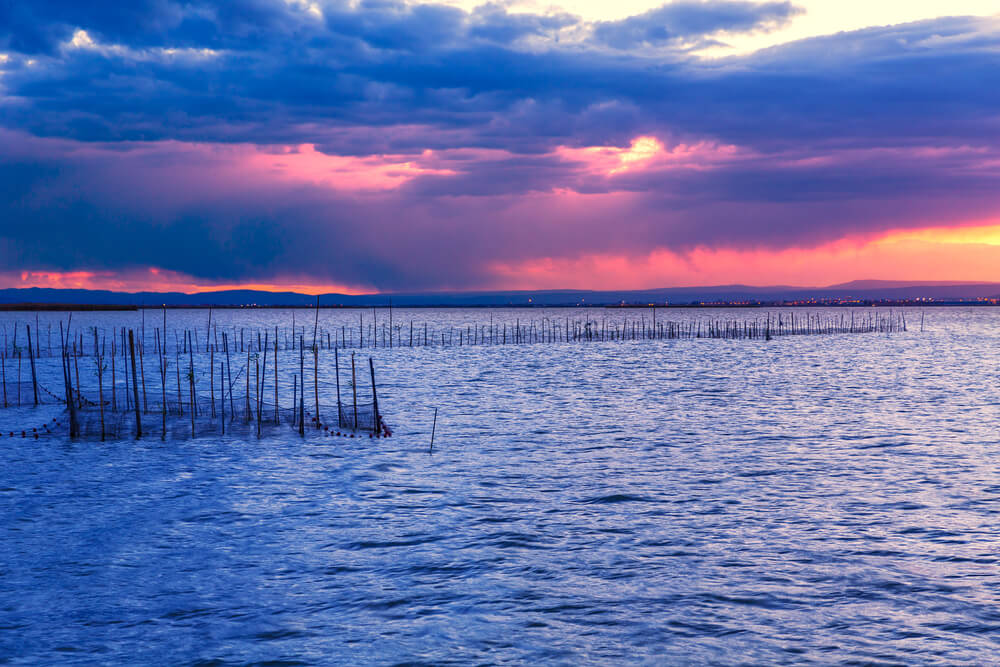
Located just 10km outside the city center is this stunning place of natural beauty. The park is Spain’s largest lagoon, and is famous for its sunsets, as well as being a beautiful place to disconnect from the hustle and bustle of the city and enjoy boat rides.
The park is surrounded by rice fields and woodlands, and has six signposted walking routes through the reserve. If you’re looking carefully, you may see waterfowl swimming in the vegetation.
11. Take the kids to Gulliver Park
Be sure to take a trip over to Gulliver Park. Inspired by the book, Gulliver’s Travels, the fun, and quirky park allows children to climb and play on a massive play structure of the character Gulliver, which is made of climbing frames and slides.
In the book, Gulliver washed ashore on an island of tiny 6-inch people. While we’re not a fan of playparks (as you can see them everywhere), Gullivers Park allows children to use their imagination and creativity.
As they climb and slide around the park, children can pretend to be one of the Lilliput inhabitants as they play on this iconic Valencia monument!
12. Relax in Plaza del Ayuntamiento
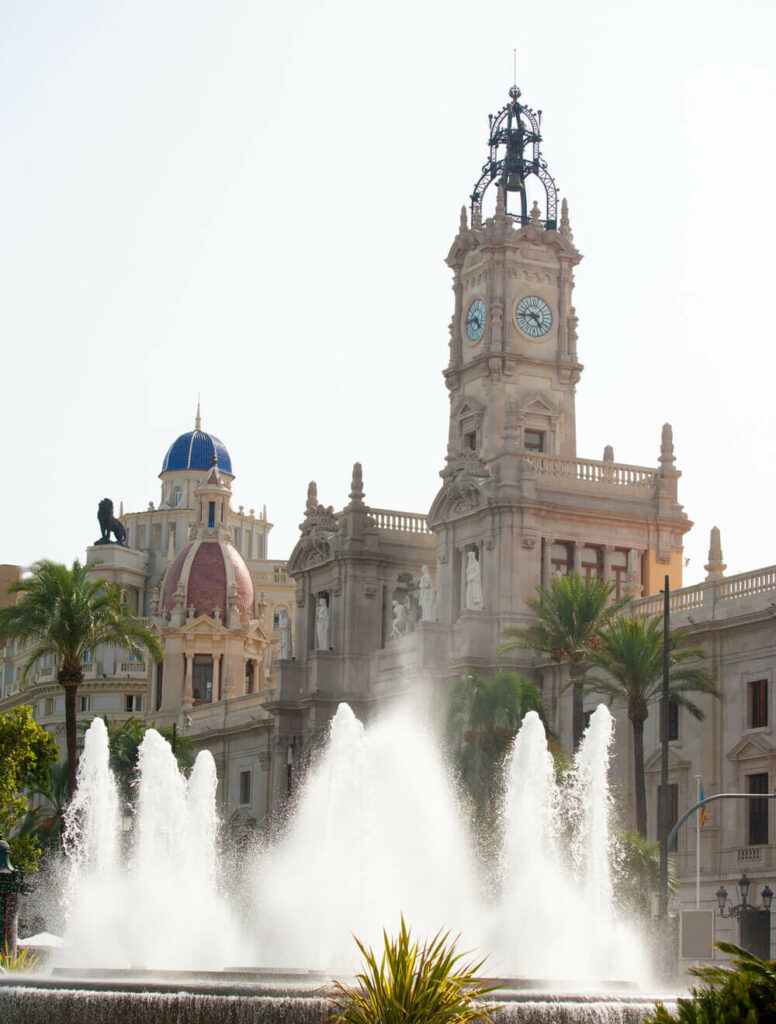
If you enjoy seeing stunning and historic architecture, then be sure to swing by the Plaza del Ayuntamiento. The square is lined with stunning buildings that were built during Valencia’s golden age.
In the center, there is an ornate fountain that is often surrounded by flower stalls. You’ll find cafes and bars nestled on the sides of the square, and down the side streets are many boutique stores and restaurants.
It’s the perfect place to sit and enjoy an espresso while soaking up the stunning Spanish architecture and watching the world go by.
13. Check out the National Museum of Ceramics
The Museo Nacional de Cerámica González Martí, or National Museum of Ceramics, is like walking through a rococo fairy tale. It’s housed in the Palacio del Marqués de Dos Aguas, a lavish alabaster portal decorated with an ornate façade, which is a work of art in itself.
The museum began in 1947 to house the collection of collector Manuel González Martí (and his wife, ceramicist Amelia Cuñat), and officially opened its doors in the palace in 1954. Inside, you’ll find a chronological journey of the story of ceramics, beginning with prehistoric shards and passing through Roman, Greek and Islamic pieces, then moving into medieval and Mudejar glazed works.
14. Admire the views from Torres de Serranos
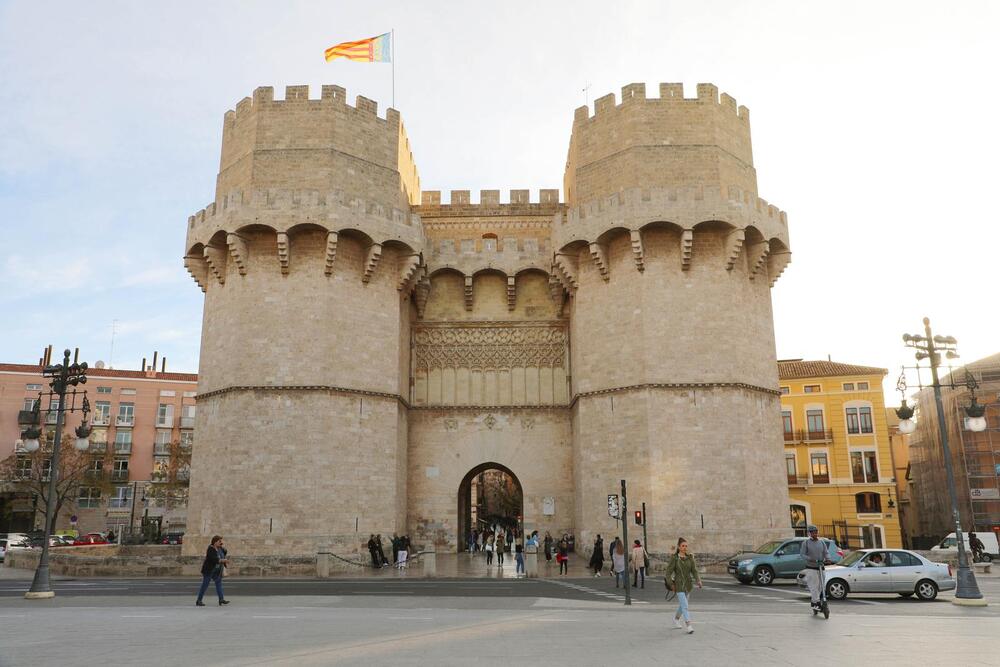
For incredible views of Valencia, climb up to Torres de Serranos, the ancient gate of old town Valencia. The gate has many names; from Serrans Gate, Serranos Gate, Serrans Towers, or Serranos Towers, Torres de Quart – whichever name you give it, you can’t deny this ancient monument is impressive.
It’s one of twelve gates that once formed the ancient city wall of the city of Valencia (also known as the Christian Wall) and was built during the 14th century.
The gate has a gothic Valencian style and it has been lovingly restored by sculptor José Aixá between 1893 and 1914. The stones were also cleaned in 2000 which is why it looks like a brand-new building. Be sure to turn around and admire the views from up here.
15. Drink some Valencian orange juice
When in Valencia, skipping a glass of fresh orange juice is practically a culinary crime. This is the heart of Spain’s citrus country, where sun-soaked orange tree groves produce oranges so sweet and juicy you won’t buy shop-bought cartons again.
Local juice is freshly squeezed, pulpy, and served ice-cold, often straight from the tree that morning.
For alcohol drinkers, look for “Agua de Valencia” on the menu when in a restaurant or bar, which is a local cocktail made with fresh orange juice, vodka, gin, and cava.
16. Eat paella at Flor de Valencia
Did you know that Valencia is the birthplace of Paella? This is the city to try delicious seafood, preferably al fresco style sitting on a terrace overlooking a piazza or the ocean.
Traditionally, paella is made with white rice, chicken and rabbit, with white beans, snails, saffron and rosemary, but you can find many different flavors here.
If you go to La Malvarrosa beach you will find the boardwalk lined with paella restaurants. Just walk along, check out the menus and decide which one appeals to you.
If you want the best paella in Valencia head to Flor de Valencia. It’s located about 25 minutes on foot from the old town or 10 minutes by bike. You can also get there by metro or cab.
17. Try Horchata at Horchateria Santa Catalina
You can’t visit Valencia and not partake in the traditional snack. A glass of cold horchata milk (made from tiger nuts and mixed with sugar) paired with fartons, a narrow pastry topped with powdered sugar.
Horchata is a bit too sweet for my liking, but this is a Valencian tradition and worth a try. Horchateria Santa Catalina is the oldest and most popular spot serving horchata and fartons. It’s also right in the city center and close to many of the Valencia attractions listed above.
18. Have tapas at Escalones de la Lonja
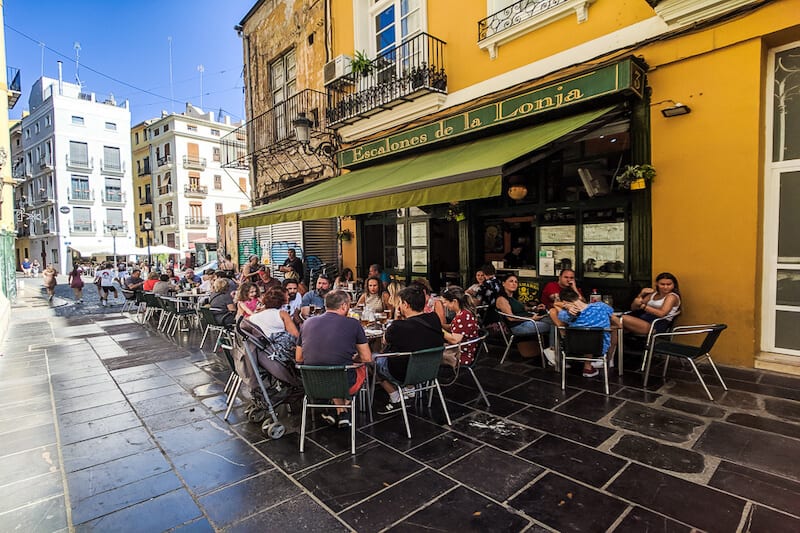 Escalones de la Lonja
Escalones de la Lonja
Another Spanish foodie thing to do is eat Tapas. Escalones de la Lonja is a traditional Spanish tapas joint filled with tourists and locals. Fun atmosphere and good prices.
19. Devour some pintxos at Pintxo i Trago
Pintxos are small toasts topped with a variety of ingredients. If you want a casual experience, go straight to the bar filled with toasts and grab a plate. You pick whichever toasts you want and keep the toothpick. That’s how the servers know what to charge you.
You could easily make an entire meal out of trying several pintxos. Upstairs is an actual sit-down restaurant. I prefer downstairs as it’s a bit livelier.
Is Valencia worth visiting?
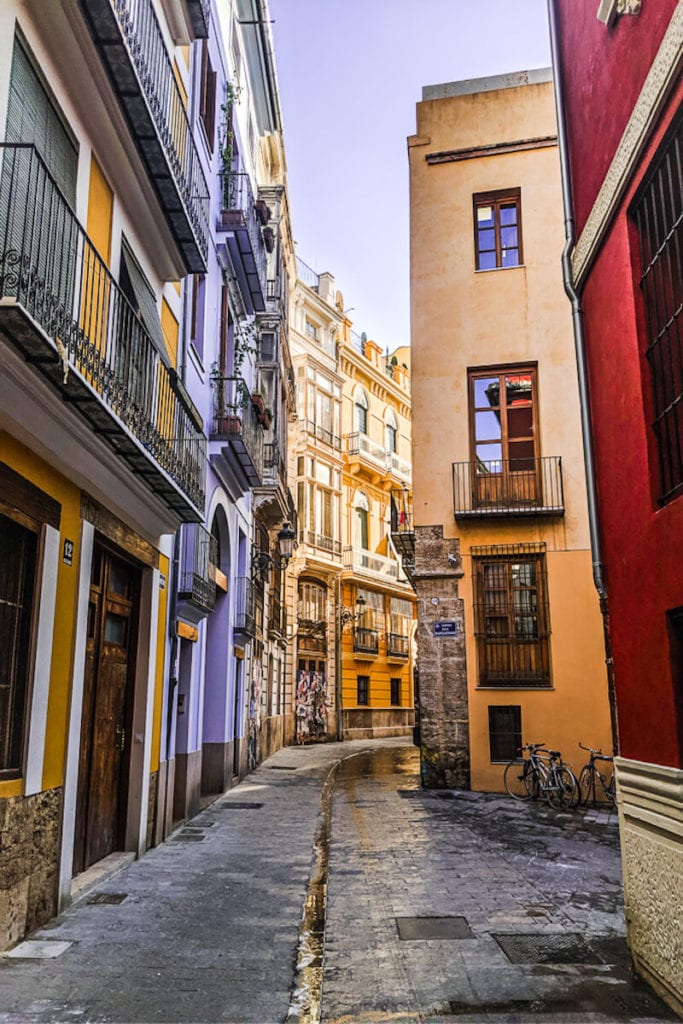
Because Valencia was skipped from our guidebooks, I asked myself if it was worth visiting. When searching Pinterest and other travel blogs, it looked pretty and quaint, and so I was perplexed as to why it seems to be overlooked by many.
Because Valencia is smaller than other Spanish cities like Madrid and Barcelona, it’s a lot easier to find quiet spots, and empty streets, and visit popular sights without feeling cramped. Valencia has a University feel with around 55,000 students, colorful neighborhoods, sandy beaches, and excellent food. It feels more authentic and “lived in” than the neighboring tourist hotspot Barcelona.
This city also seems to be a popular destination for Spaniards to visit on vacation. I noticed there were more Spanish people vacationing here than tourists from abroad, which I loved! Wandering the city, I often felt like I found a hidden gem. And for that reason, it’s absolutely worth visiting.
Read more: Madrid Itinerary
How to get to Valencia
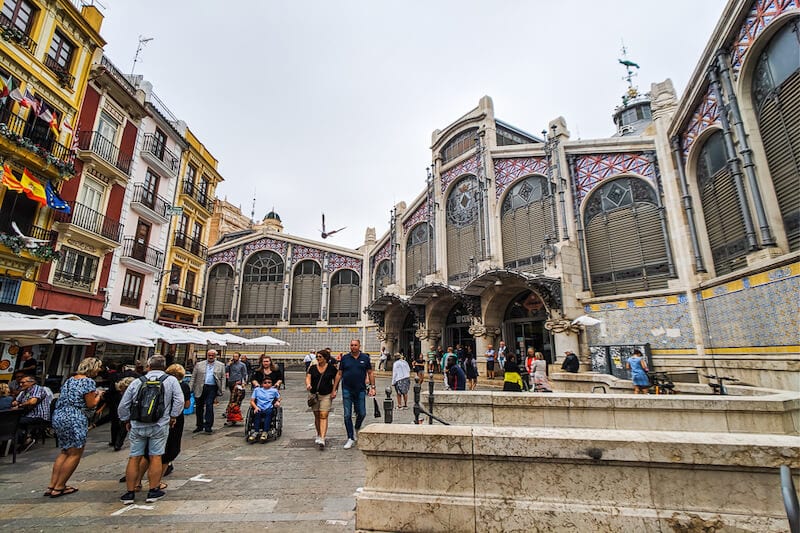
Valencia is located on the coast of eastern Spain, below Barcelona and east of Madrid. Its location makes for an easy next stop after visiting Madrid, Barcelona, Ibiza, and/or Mallorca.
It’s about a 4-hour drive from Madrid to Valencia and 3.5 hour’s drive from Barcelona. You can also get direct trains and buses, which makes traveling between these major cities easy. Madrid has a high-speed train that gets you to Valencia in just over 2 hours. Barcelona to Valencia will take about 4 hours by train.
Valencia does have its own airport so you could easily fly right into Valencia (though it may not be the cheapest airport to fly into if you’re coming from outside of Europe).
Valencia is a convenient city to visit if want to hit some Spanish islands later. An easy itinerary for Spain would be Valencia, Ibiza, and Mallorca. Flights are less than 1 hour to these islands and if you plan ahead you can snag tickets for less than the cost of a pizza in Italy… yes, seriously!
Getting around Valencia
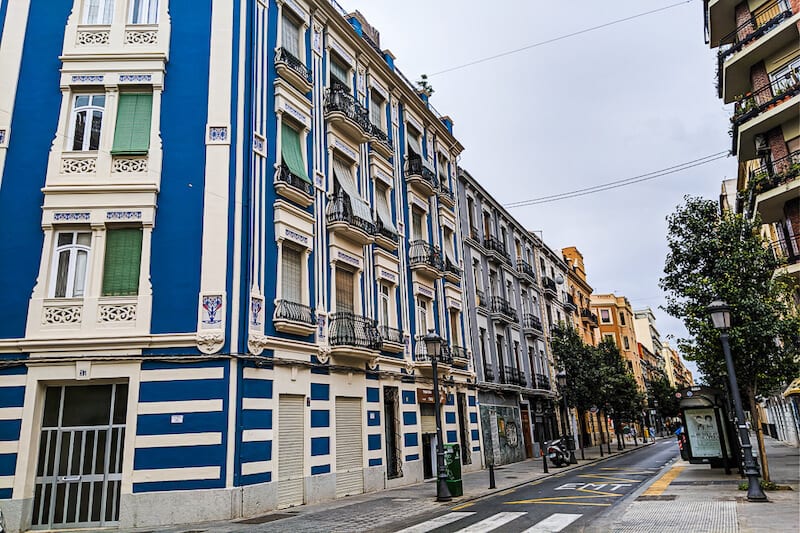
Once you reach the city center it’s extremely easy to get around. The core of the city is walkable and compact. Renting a bike is a popular option as Valencia is bike friendly and you can actually bike all the way to the beach via the Turia Gardens.
Like other large European cities, Valencia also has a metro system that is easy to use and cheap to get around. Chances are the only time you’ll really need to use the metro is to and from the airport.
Walking and biking are preferable as most sights are close together and you’ll get to enjoy the views and people-watching as you go from place to place.
What is the best time to visit Valencia?
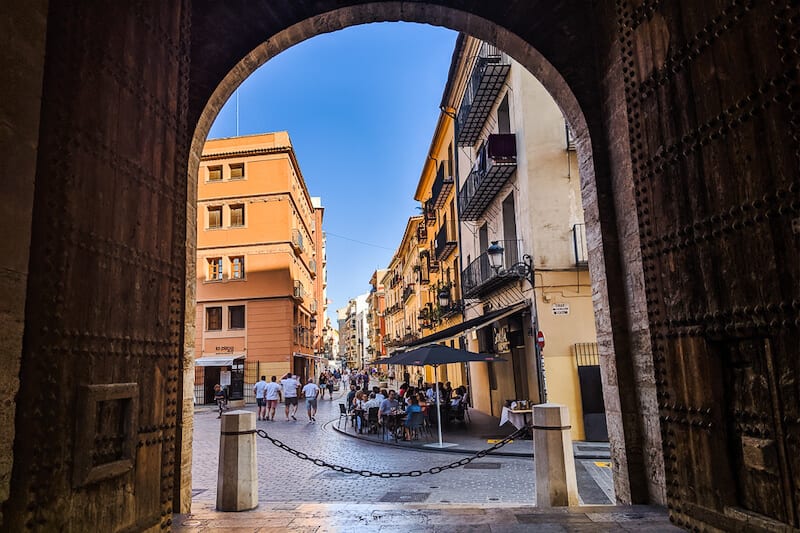
Valencia has a Mediterranean climate very similar to Barcelona, so weather-wise, it’s decent to visit year-round. If you’re looking for warm sunny days and fewer crowds, April through May and late September to early November are the best times to visit Valencia.
If beach weather is high on your priority list aim for May and October as temperatures range from the high-50s to mid-70s. Keep in mind that fall will have a higher chance of rain and clouds than spring.
Winter is the perfect time of year for tourists looking for low crowds and prices and decent sightseeing weather. Temperatures range from the mid-40s to mid-60s. Valencia is no different than the rest of Europe in that it gets expensive and crowded in the summer. Avoid June through mid-September if you want to avoid the headache of crowds and expensive hotel rates.
Where to stay in Valencia
Valencia is Spain’s third largest city, but it has a small town feel. For first timers, I recommend you stay in the heart of the old town, around the Plaza de la Reina and the Cathedral, where you will find boutique hotels and charming guesthouses.
For a more modern, lively scene, the Ruzafa district has trendy cafés, street art, and nightlife, whereas beach lovers will want to base themselves around Malvarrosa and Cabanyal areas for waking up to the sound of waves.
No matter your budget or style, there’s tons of places to stay in Valencia, just browse this interactive map:
Final thoughts
Valencia is a city that effortlessly balances old-world charm with futuristic flair, where every corner you stumble upon some form of magic – gothic cathedrals, ornate plazas, and vibrant markets.
It’s also a foodie paradise, as you can tell from the recommendations in this guide. From sizzling paella to a glass of freshly squeezed orange juice, every bite is a taste of the relaxed Mediterranean vibe you find here.
We hope that you enjoy exploring this city that’s both historically rich and joyfully alive, offering something for every kind of traveler!
Pin To Save It On Pinterest



Please visit:
Our Sponsor
